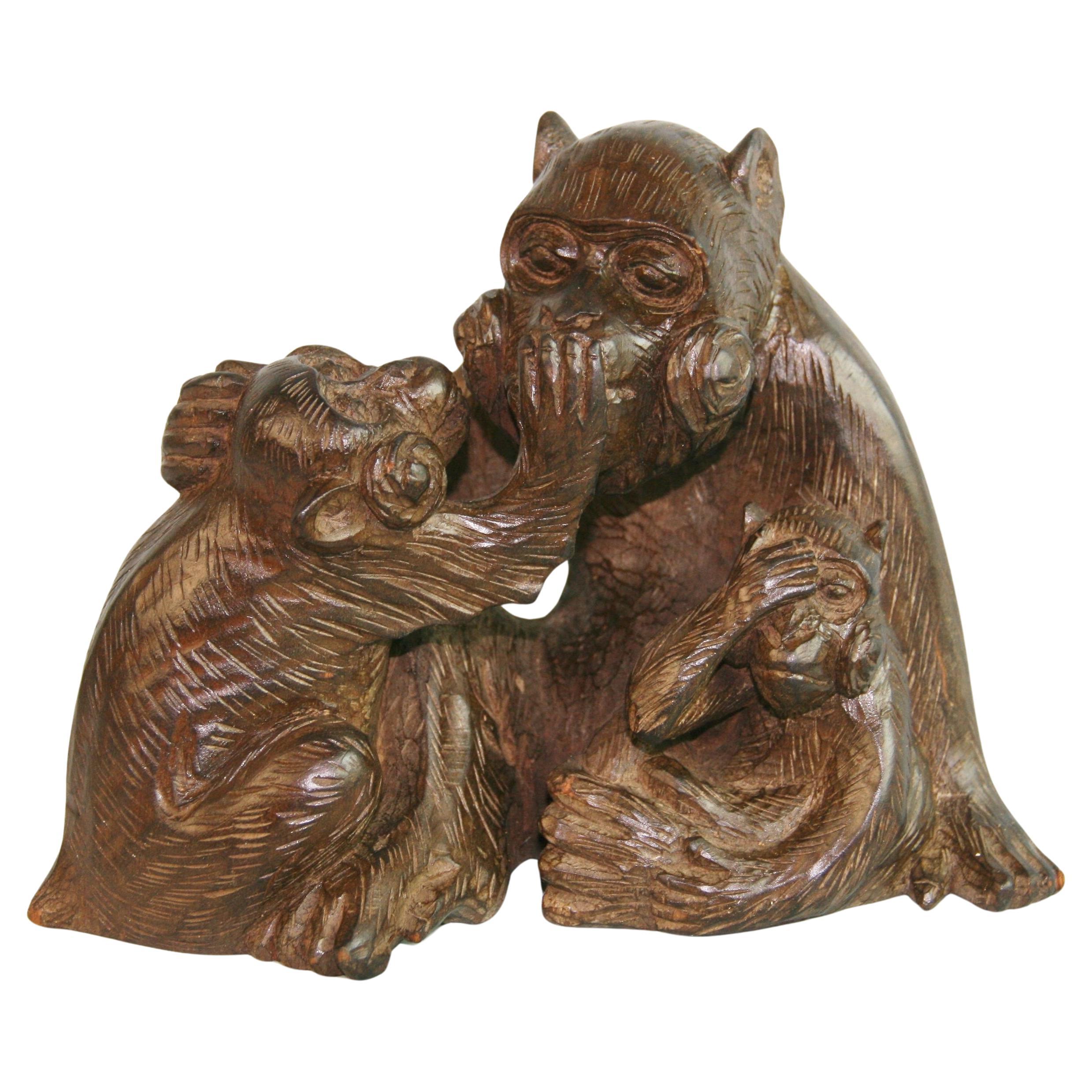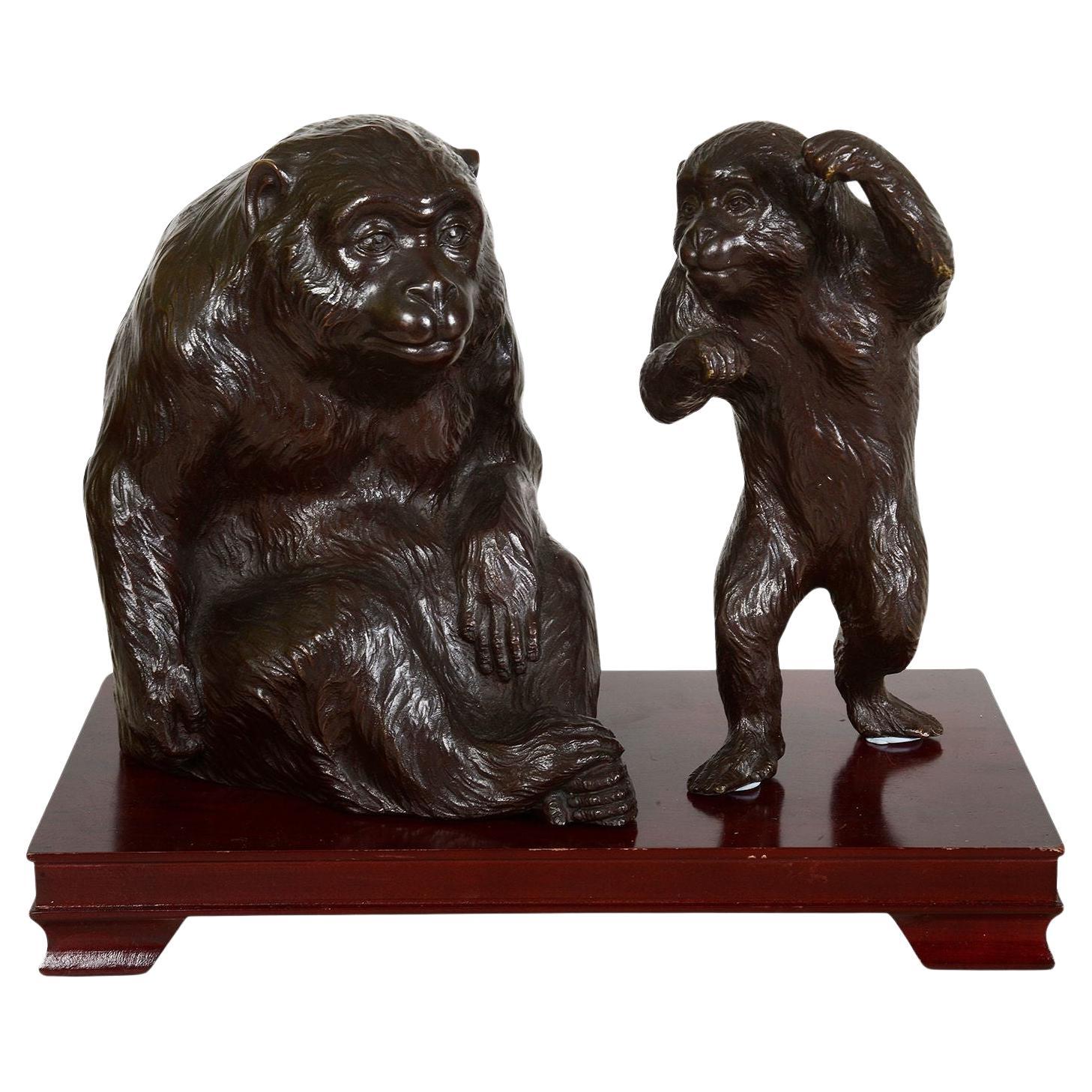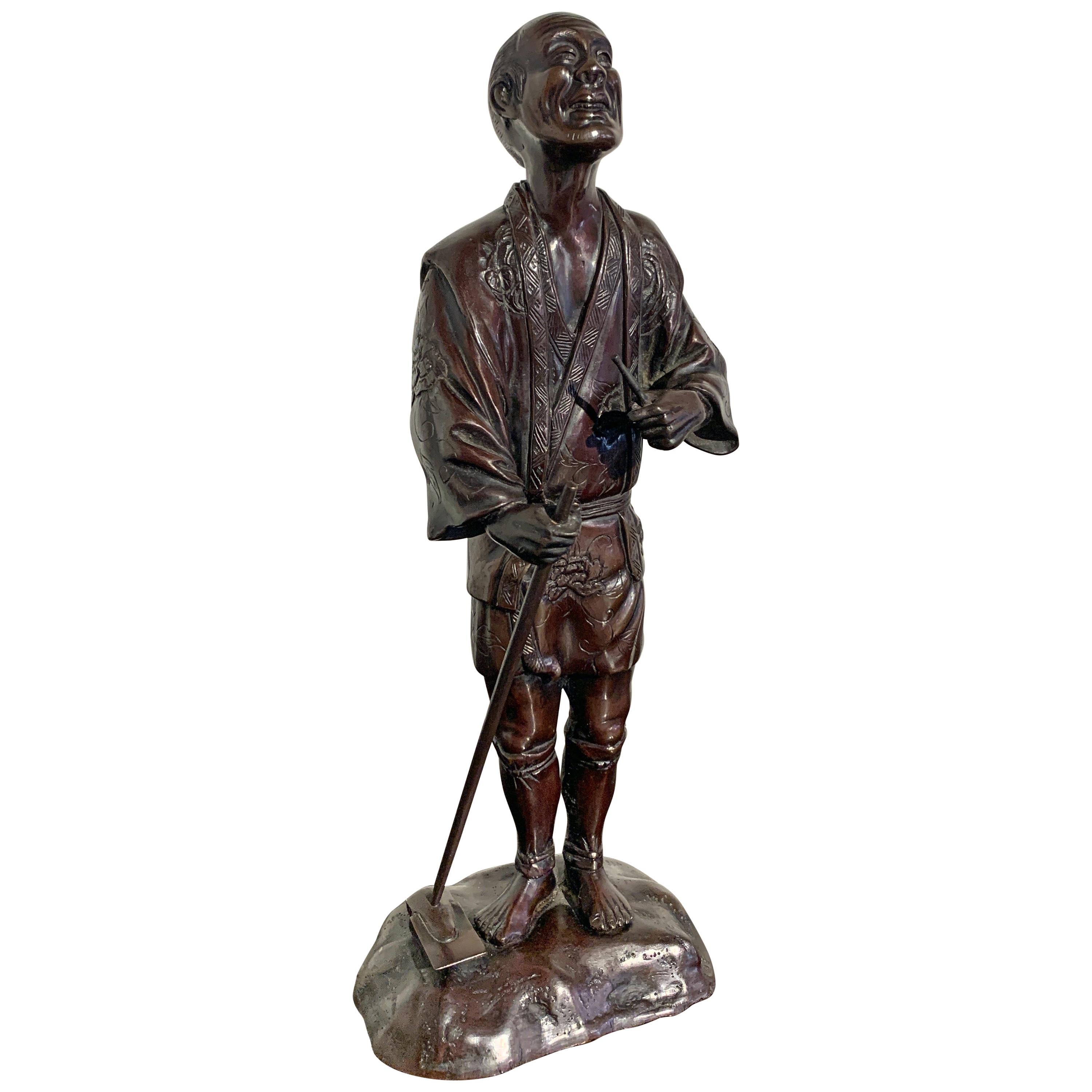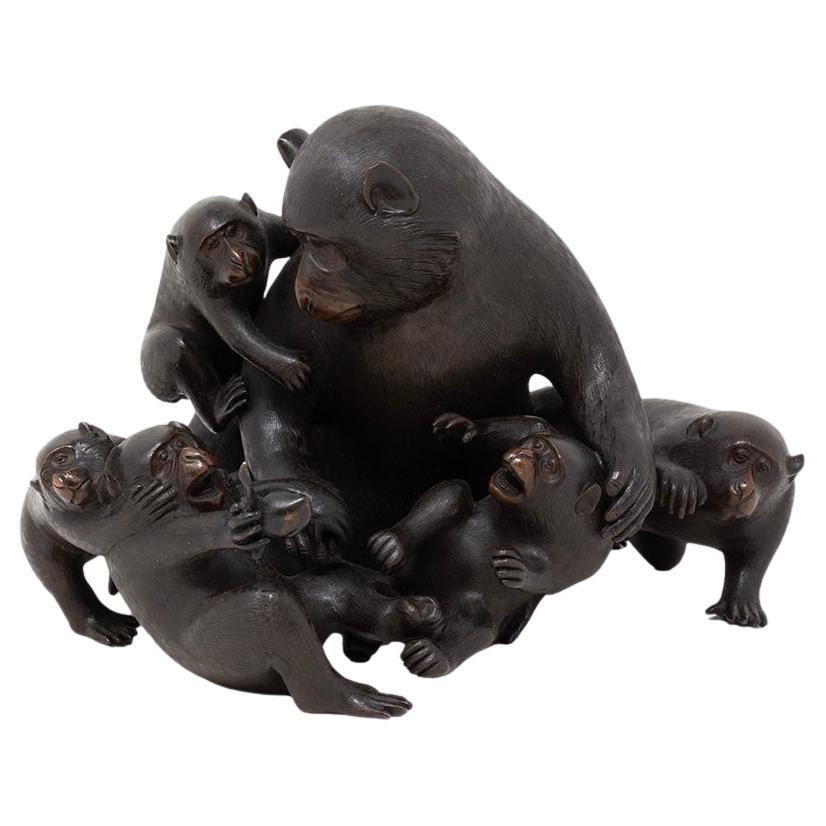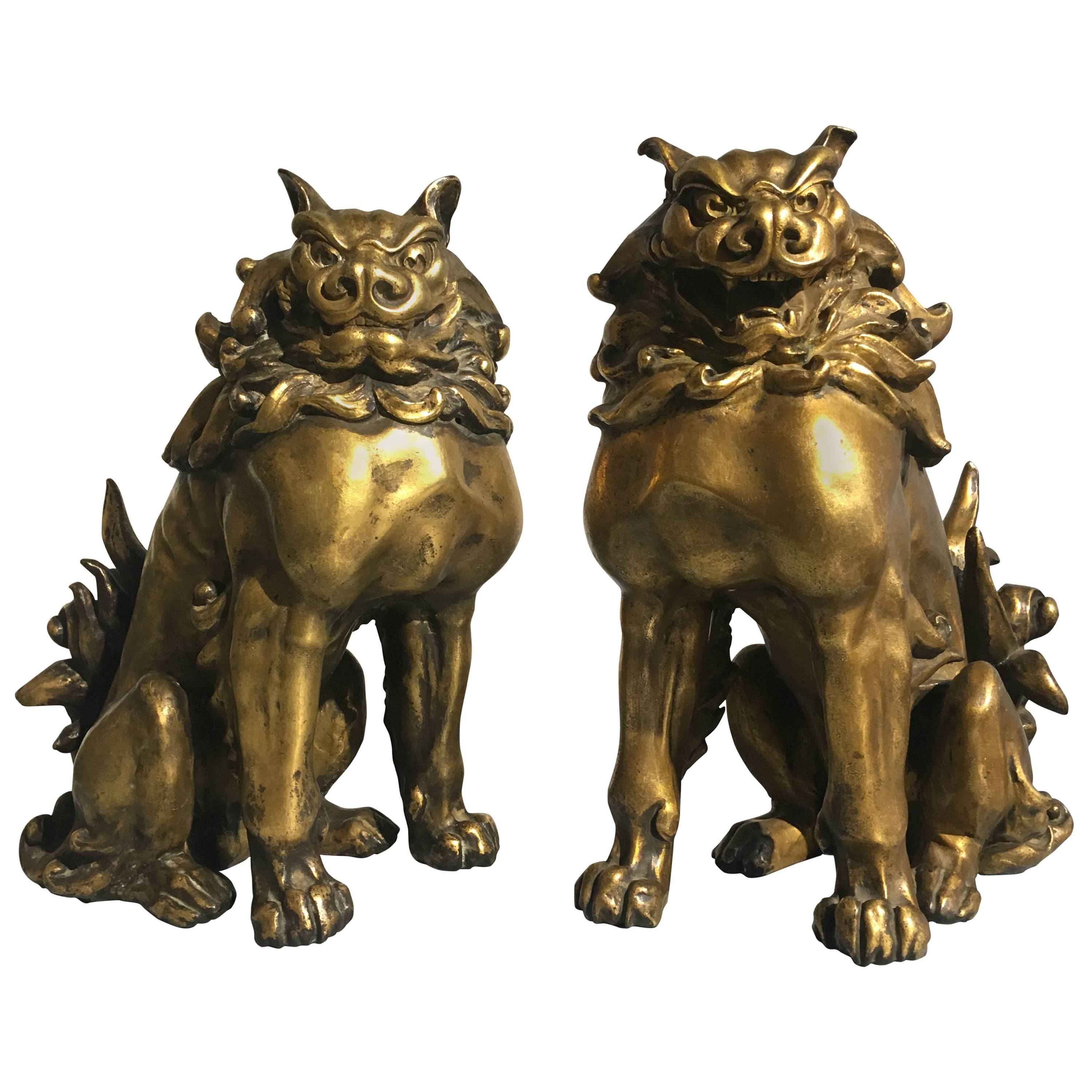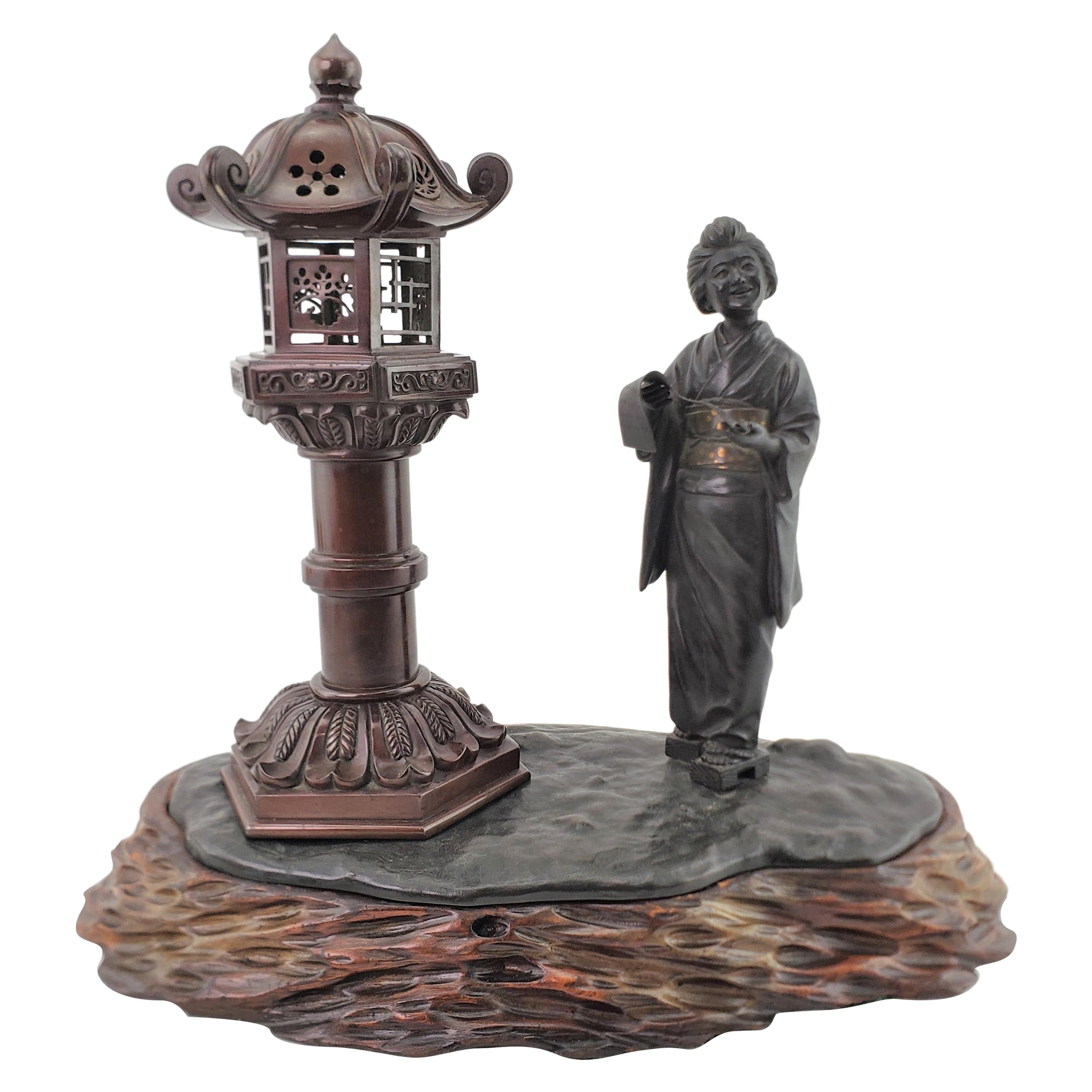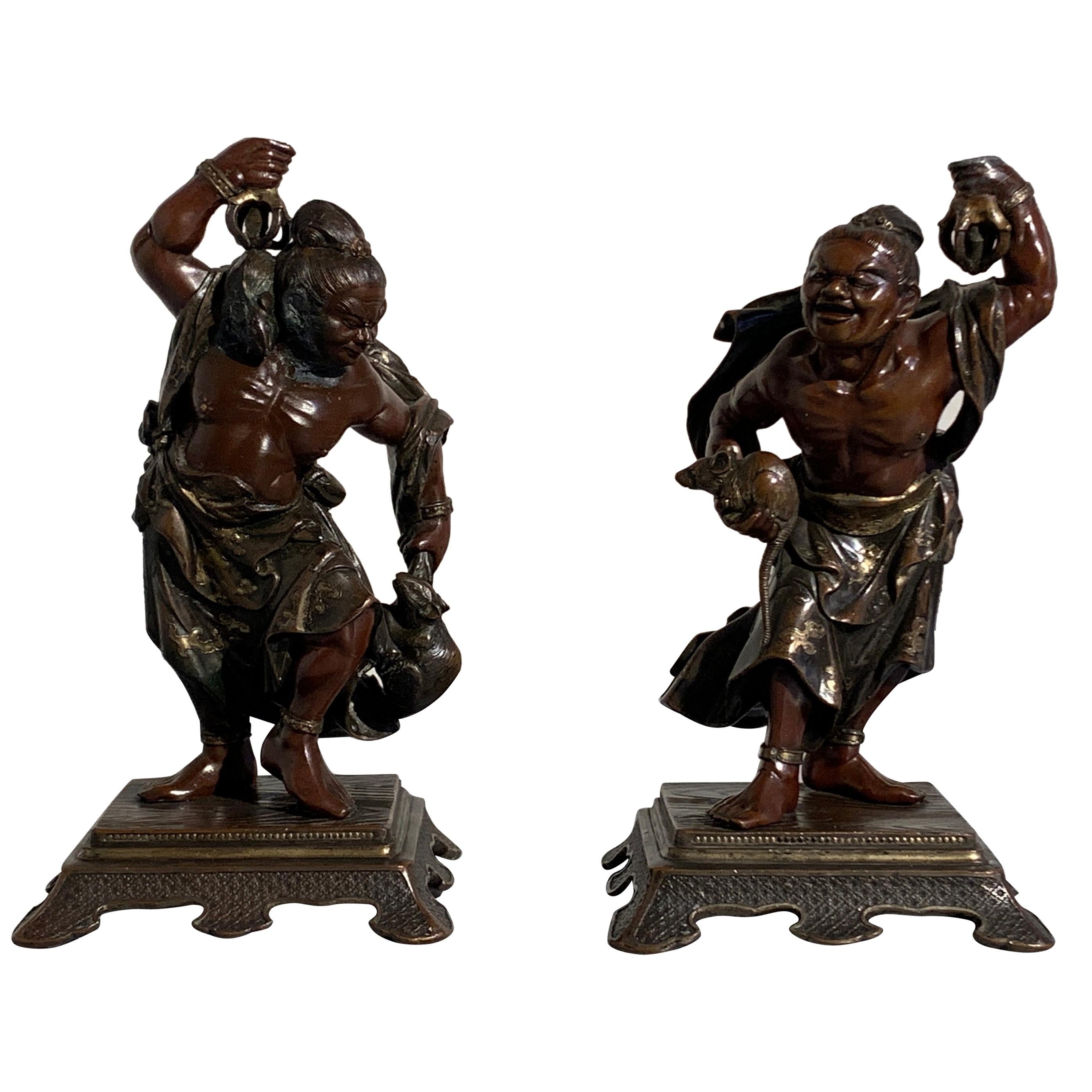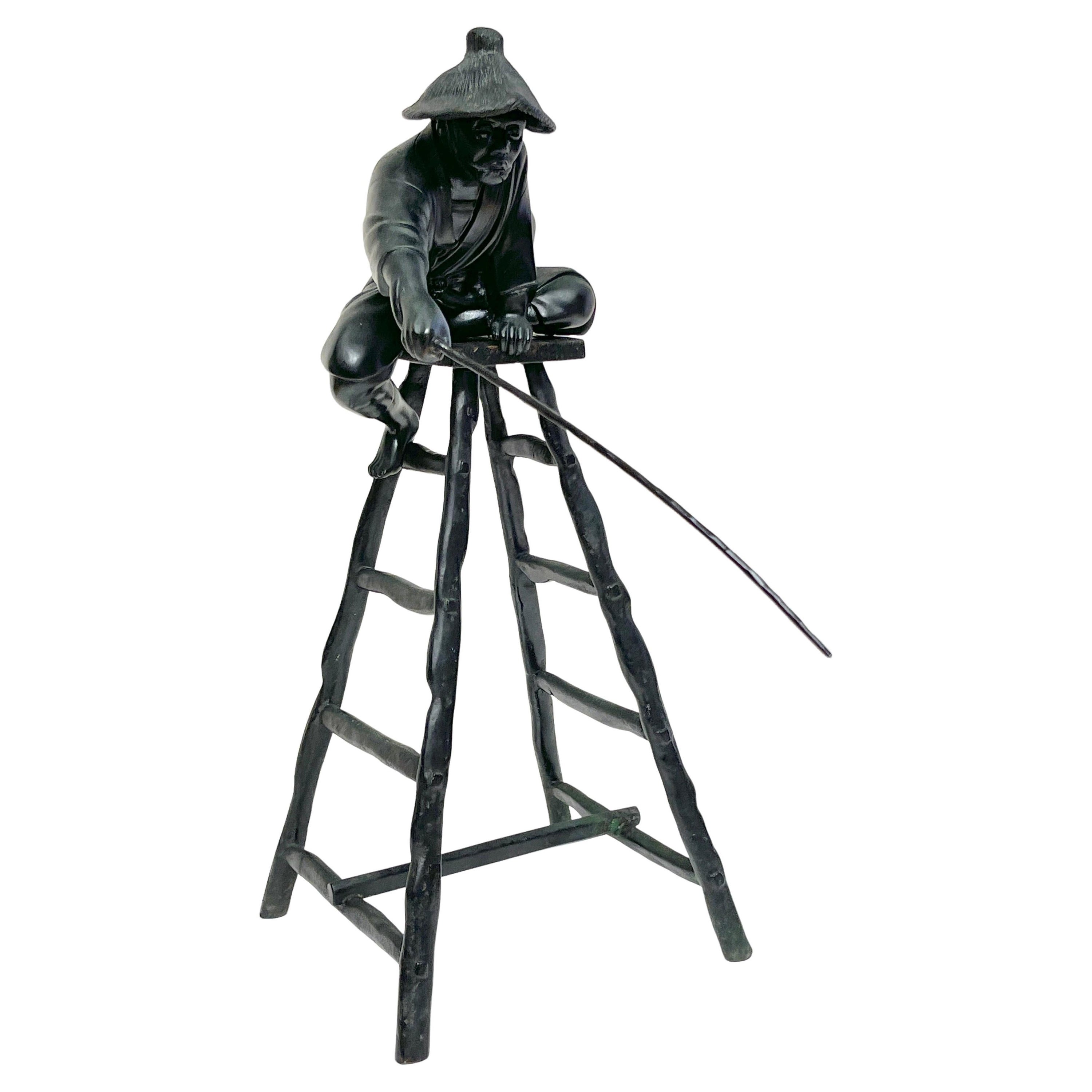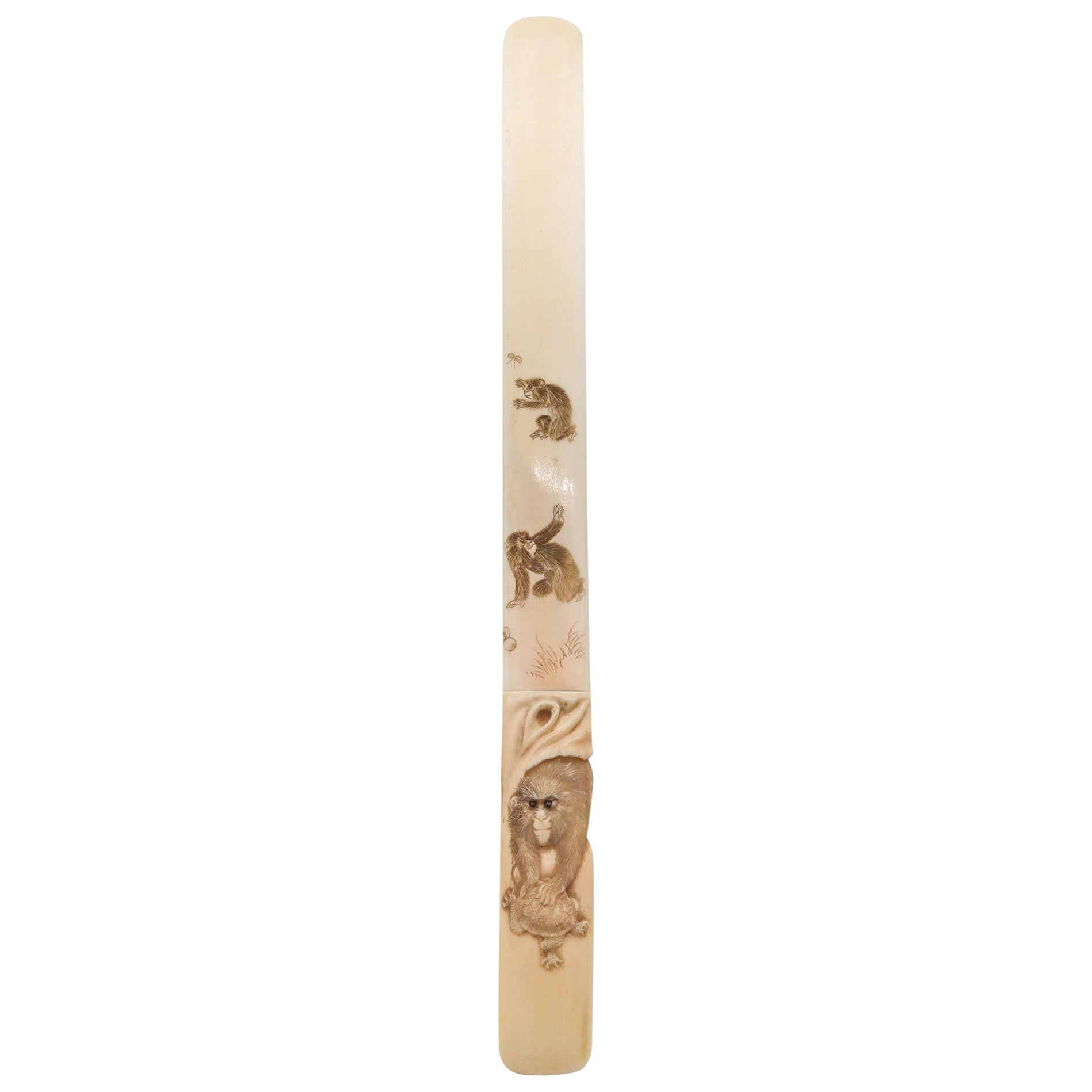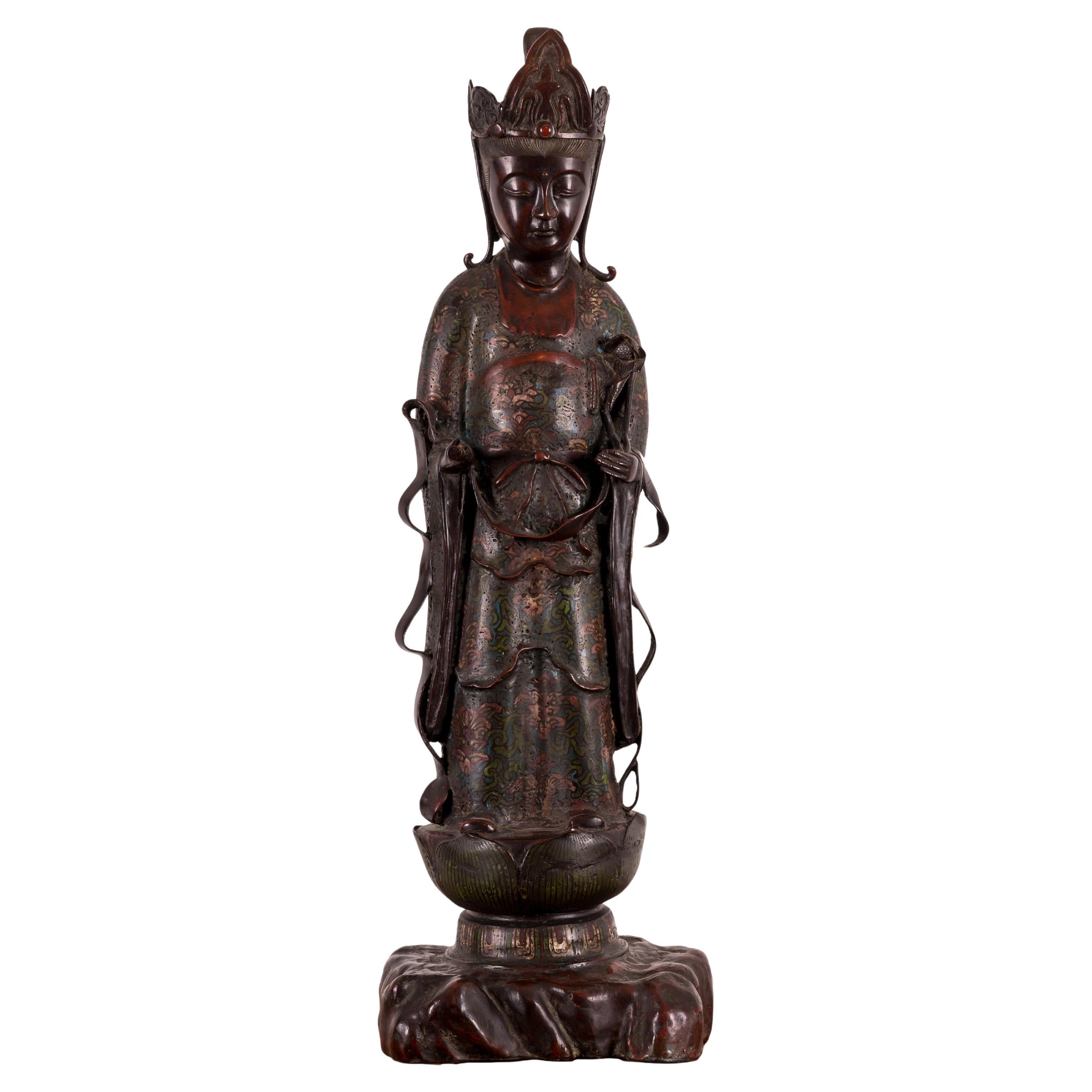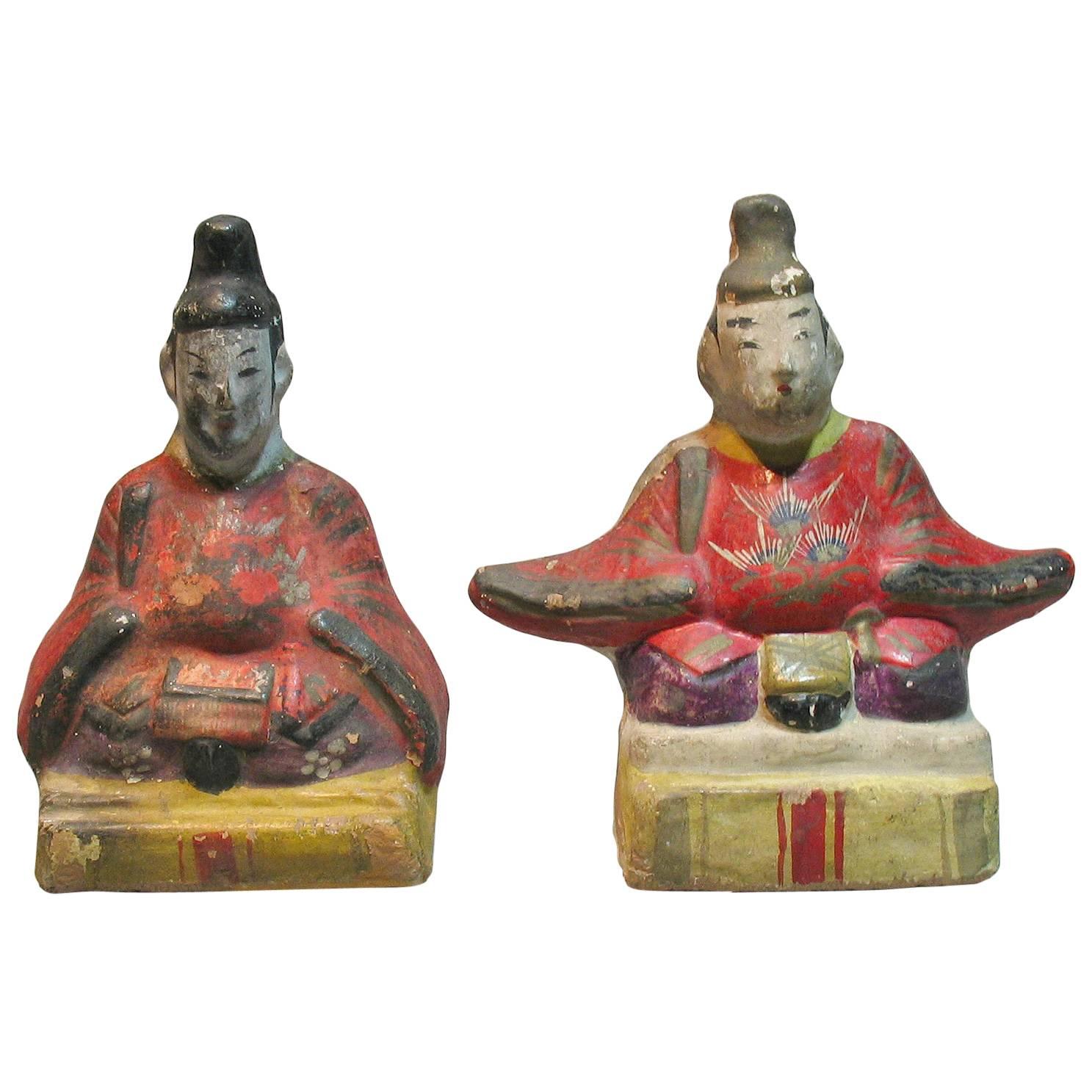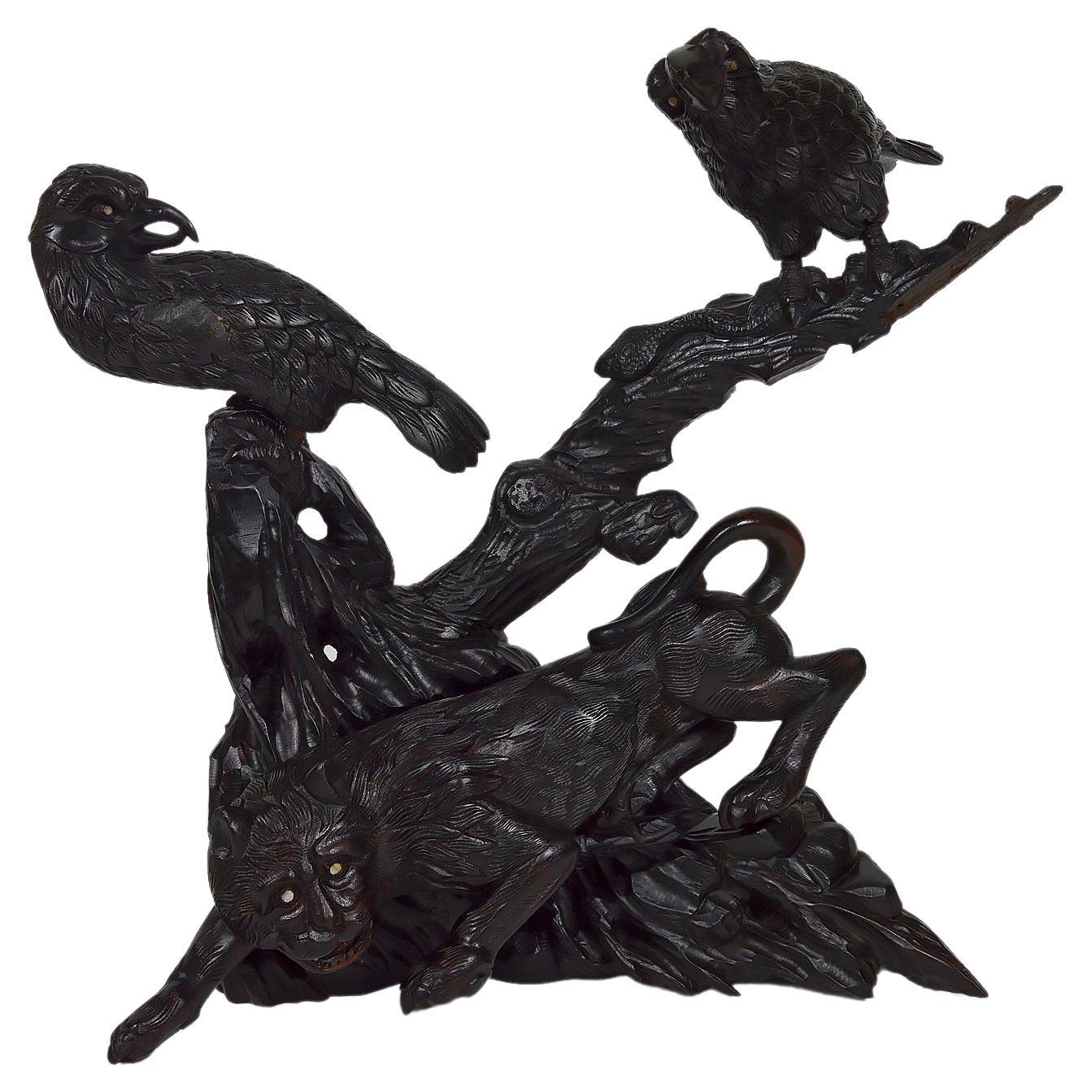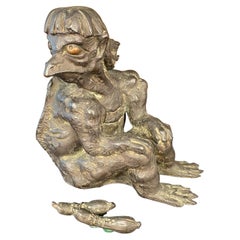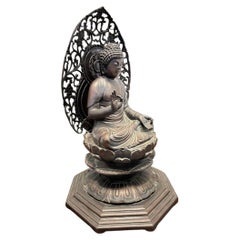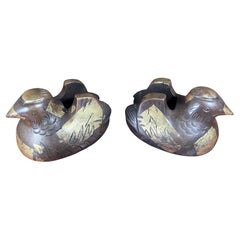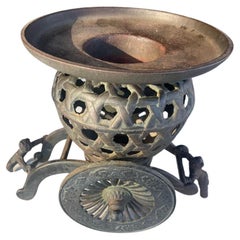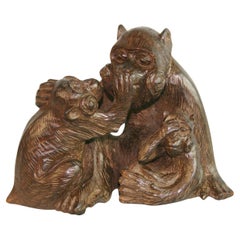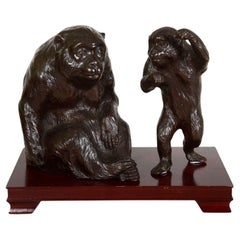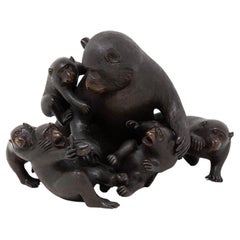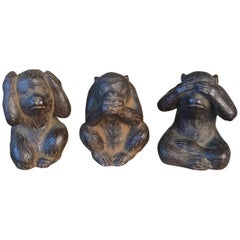
Japan Antique Monkeys Bronze Set Three See, Hear, Speak No Evil Meiji
View Similar Items
Want more images or videos?
Request additional images or videos from the seller
1 of 10
Japan Antique Monkeys Bronze Set Three See, Hear, Speak No Evil Meiji
$1,650List Price
About the Item
- Dimensions:Height: 4 in (10.16 cm)Width: 3 in (7.62 cm)Depth: 3 in (7.62 cm)
- Style:Meiji (Of the Period)
- Materials and Techniques:Bronze,Cast
- Place of Origin:
- Period:
- Date of Manufacture:1890
- Condition:Wear consistent with age and use.
- Seller Location:South Burlington, VT
- Reference Number:1stDibs: LU1289210194851
About the Seller
5.0
Platinum Seller
Premium sellers with a 4.7+ rating and 24-hour response times
Established in 1990
1stDibs seller since 2015
2,390 sales on 1stDibs
Typical response time: 1 hour
Authenticity Guarantee
In the unlikely event there�’s an issue with an item’s authenticity, contact us within 1 year for a full refund. DetailsMoney-Back Guarantee
If your item is not as described, is damaged in transit, or does not arrive, contact us within 7 days for a full refund. Details24-Hour Cancellation
You have a 24-hour grace period in which to reconsider your purchase, with no questions asked.Vetted Professional Sellers
Our world-class sellers must adhere to strict standards for service and quality, maintaining the integrity of our listings.Price-Match Guarantee
If you find that a seller listed the same item for a lower price elsewhere, we’ll match it.Trusted Global Delivery
Our best-in-class carrier network provides specialized shipping options worldwide, including custom delivery.More From This Seller
View AllJapanese Bronze Folk Art Kappa, circa 1930
Located in South Burlington, VT
Japan, a beautiful, unusual and possibly unique antique hand cast bronze "Kappa" (child protector) sculptor complete with a separately formed bronze pair of 3.5 inch long cucumbers- a kappa's favorite snack food. Signed.
Signed
An incised artist signature “Bunraku” on base. "Bunraku" is associated with Japanese puppet play and performance,
Kappa Bring Good Fortune
Japanese Kappa...
Category
Early 20th Century Japanese Showa Sculptures and Carvings
Materials
Bronze
$1,200 Sale Price / set
78% Off
Japanese Large Old Bronze Seated Buddha , Kyoto Find
Located in South Burlington, VT
Japan, a fine large old seated Buddha, heavily hand cast bronze, with a fine medium to dark brown patina performing the mudra of compassion.
High quality, deep casting with fine ser...
Category
Mid-20th Century Japanese Showa Sculptures and Carvings
Materials
Bronze
$1,600 Sale Price
58% Off
Japanese Fine Antique Pair Gilt Bronze Mandarin Duck Screen Holders
Located in South Burlington, VT
Best Quality, Hard To Find, complete with antique wooden collector box tomobako
A fine pair (2) of Japanese antique hand cast gilt bronze Mandarin Duck screen holders with highly d...
Category
Antique Late 19th Century Japanese Meiji Paintings and Screens
Materials
Bronze
Japan Early Ikebana Planter Garden Cart with Children, Meiji Period
Located in South Burlington, VT
A rare 19th century hard to find Japanese Usubata Flower Planter Cart "Norimono",
Late Meiji Period.
Japan, this handsome quality old style "garden cart" ikebana planter is an exceptionally rare find and an authentic old work of Japanese art.
Brilliantly designed and a handsome plant presentation with removable ikebana vase inserted into an openwork wicker basket set on a wheeled cart...
Category
Antique Late 19th Century Japanese Meiji Lanterns
Materials
Iron
$180 Sale Price
69% Off
Japanese Antique Bronze Electrified Shrine Lantern with fine Heart motif Designs
Located in South Burlington, VT
A Special Antique Interior Lighting Choice- One Of Kind And Over 100 Years Old
Japan, a well loved antique heavy bronze shrine lantern with attractive Hoju jewel finial, heart shape...
Category
Antique 19th Century Japanese Meiji Sculptures and Carvings
Materials
Bronze
Japan Large Antique Bronze Seated Kanon Beautiful Face
Located in South Burlington, VT
Japan, a large 49" tall antique early 20th century elegant cast bronze seated Kanon Maitreya, Guan Yin in a pensive pose.
This example is the oldest and largest version of this bro...
Category
Early 20th Century Japanese Showa Statues
Materials
Bronze
You May Also Like
Japanese Hand Carved Monkey Family Sculpture Hear, See and Speak No Emil
Located in Douglas Manor, NY
1276 Japanese hand carved hardwood monkey family sculpture.
Fine detail.
Category
Mid-20th Century Sculptures and Carvings
Materials
Hardwood
Meiji period Japanese bronze Monkeys.
Located in Brighton, Sussex
These exquisite Japanese Meiji period sculptures depict two patinated bronze monkeys, showcasing the artistry and craftsmanship of the era. The larger monkey, seated with a contempla...
Category
Antique Late 19th Century Japanese Sculptures and Carvings
Materials
Bronze
Japanese Tokyo School Bronze Okimono of a Farmer, Meiji Period
Located in Austin, TX
A very fine and detailed Tokyo School cast bronze okimono (decorative sculpture) of a smiling farmer, Meiji period, late 19th century, Japan.
The e...
Category
Antique Late 19th Century Japanese Meiji Sculptures and Carvings
Materials
Bronze
Japanese Meiji Period Bronze Monkey Group Sculpture Okimono Shosai
Located in Newark, England
Featuring Seven Japanese Macaques
Form our Japanese collection, we are delighted to offer this Japanese Bronze Monkey Group by Shosai. The Japanese Bronze Group displaying a male father monkey and his infants playing around and being mischievous with Persimmon fruit. The monkeys modelled as Japanese macaque monkeys (snow monkey). The bronze okimono is beautifully patinated with a highly lifelike and naturalistic casting signed to the underside Shosai 正齊鋳. The Bronze group dates to the Meiji Period (1868-1912) circa 1885.
Japanese macaque (snow monkey) is a terrestrial Old World monkey species that is native to Japan. They are known as snow monkeys because some live in areas where snow covers the ground for long periods each year hence their nickname. No other non-human primate lives further north or in a colder climate than the snow monkey. Individuals have brownish grey fur, pinkish-red faces, and short tails. Two subspecies are known and their conservation Status is of least concern. In Japan, the species is known as Nihonzaru ニホンザル, 日本 (Japan/Nihon) and saru 猿 (monkey) to distinguish it from other primates, but the Japanese macaque is the only species of monkey in Japan.
The Japanese macaque features heavily in the religion, folklore, and art of Japan, as well as in proverbs and idiomatic expressions in the Japanese language. They are often seen in paintings, block prints and represented in all manner of carvings from Okimono to netsuke. Many of these art forms reside in the world’s most famous museums and collections, some of the most prominent pieces by artists such as Mori Sosen and Kawanabe Kyosai. In Shinto belief (Japan’s indigenous religion/nature religion) legendary mythical beasts known as raiju sometimes appeared as monkeys and kept Raijin (the god of lightning/storms) company. In another well known tale the three wise monkeys who warn people to “see no evil, hear no evil and speak no evil” can be seen depicted in relief over the door of the famous Tosho-gu shrine in Nikko.
Meiji Period was an era of Japanese history that spanned from 1868 to 1912. It was the first half of the Empire of Japan, when the Japanese people began to build a paradigm of a modern, industrialised nation state and emergent great power, influenced by Western countries and aesthetics. As a result of radically different ideas, the changes to Japan were profound and it affected the social structure, politics, economy, military, and foreign relations across the board. The period corresponded to the reign of Emperor Meiji and was preceded by the Keio era and was succeeded by the Taisho era.
Cultural Art during the Meiji Period was of particular interest to the government and they overhauled the art export market which in turn promoted Japanese arts via various world’s fairs, beginning in Vienna at the world fair in 1873. The government heavily funded the fairs and took an active role organising how Japan’s culture was presented to the world including creating a semi-public company named Kiritsu Kosho Kaisha (First Industrial Manufacturing Company). The Kiritsu Kosho Kaisha was used to promote and commercialise exports of Japanese art and established the Hakurankai Jimukyoku (Exhibition Bureau) to maintain quality standards. For the 1876 Centennial International Exhibition in Philadelphia, the Japanese government created a Centennial Office and sent a special envoy to secure space for the 30,000 items that would be displayed. The Imperial Household also took an active interest in arts and crafts, commissioning works by select artists to be given as gifts for foreign dignitaries further emphasising the high quality and importance of Japanese art. Just before the end of the 19th century in 1890, the Teishitsu Gigeiin (Artist to the Imperial Household) system was created to recognise distinguished artists. These artists were selected for their exceptionally high quality wares and talent in their own industry. Over a period of 54 years Seventy artists were appointed, amongst these were ceramicist Makuzu Kozan and cloisonné enamel artist...
Category
Antique Late 19th Century Japanese Meiji Sculptures and Carvings
Materials
Bronze
Pair of Japanese Gilt Bronze Komainu by Ishikawa Komei, Meiji Period
Located in Austin, TX
A striking pair of Japanese gilt bronze komainu by the renowned Japanese sculptor, Ishikawa Komei (1852-1913), Meiji period, Japan.
The pair well cast, and robustly modeled. They ar...
Category
Antique Late 19th Century Japanese Meiji Sculptures and Carvings
Materials
Bronze
Antique Meiji Signed Japanese Figural Woman & Lantern Incense Burner with Base
Located in Hamilton, Ontario
This large antique Meiji period Japanese patinated and polychromed bronze is signed by an unknown artist and presumed to have been made in approximately 1880 in the period Meiji styl...
Category
Antique Late 19th Century Japanese Meiji Sculptures and Carvings
Materials
Bronze
